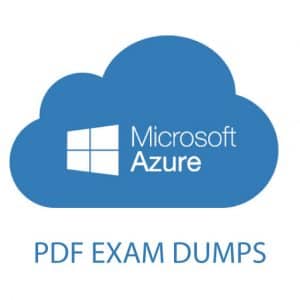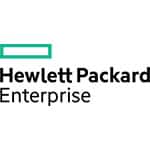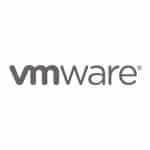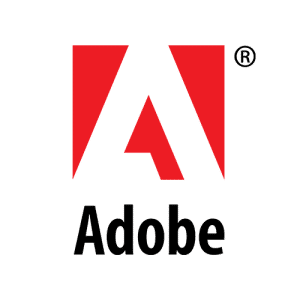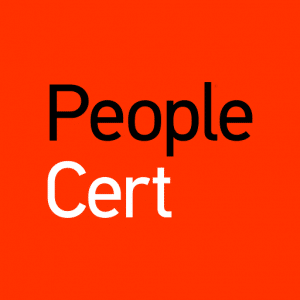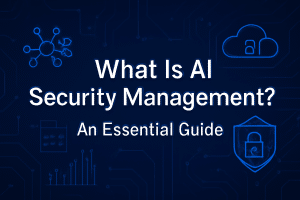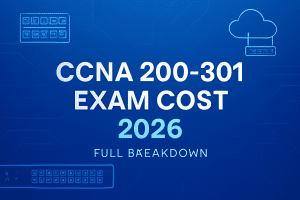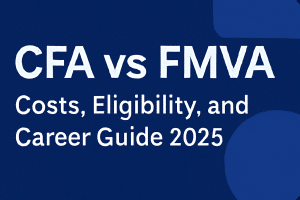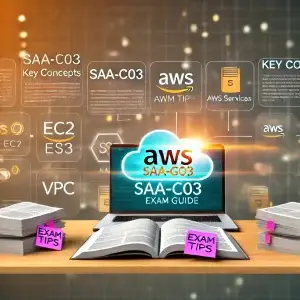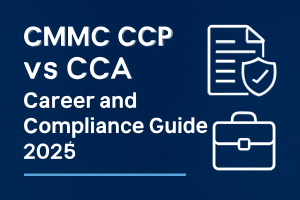If you have been thinking about starting your cloud certification journey, the AZ-900 exam is the perfect first step. Known as Microsoft Azure Fundamentals, this one certification exam is designed for beginners, whether you’re diving into IT for the first time or want to boost your career with foundational cloud knowledge. The best part? You don’t need prior technical experience to succeed.
This guide explores practical tips, smart study strategies, and essential resources to help you ace the AZ-900 exam on your first attempt. From understanding key Azure concepts to avoiding common mistakes, we’ve got everything you need to simplify your prep and build your confidence.
Ready to take the first step toward your Azure certification? Let’s dive in!
Why the AZ-900 Certification Is Worth Your Time
If you’re curious about cloud computing or considering a career in tech, the AZ-900 cert is one of the smartest moves you can make. It’s not just for techies or engineers, it’s built for anyone who wants to learn what Azure is all about without getting lost in complicated technical jargon.
Whether you’re in marketing, sales, management, or even a student exploring career options, this cert introduces you to cloud basics in a way that feels approachable.
The Value of Foundational Azure Knowledge in 2026
Cloud computing is no longer the future, it’s already here, running everything from apps to data storage. Microsoft Azure is one of the top players in the cloud space, and having a basic understanding of how it works is like adding a universal skill to your toolbox.
In 2026, businesses of all sizes are investing in cloud technologies, which makes knowing Azure fundamentals even more valuable.
Learning Azure isn’t just about tech; it’s about understanding how businesses operate today. Imagine being in a meeting where terms like SaaS, PaaS, or IaaS are thrown around. With AZ-900 knowledge, you won’t just nod along, you’ll actually know what they mean.
This cert acts like a cheat code, giving you the vocabulary and concepts to stand out, whether you’re a complete newbie or just looking to fill gaps in your knowledge.
Who Benefits Most from Earning the AZ-900 Certification?
Wondering if this cert is for you? Here’s the deal: AZ-900 is training course built for anyone curious about the cloud. You don’t need to be a software developer or an IT pro. This exam caters to:
- Students and recent grads who want a strong foundation in cloud computing
- Non-technical roles like sales, marketing, or project managers working with Azure-powered products
- Small business owners exploring Azure tools to grow their operations
- Career changers looking for a foot in the tech door without diving too deep right away
It’s also a great choice for tech enthusiasts who want to test the waters before committing to advanced certs like the AZ-104 or AZ-305. Think of it as the appetizer that helps you decide if the full Azure meal is what you’re craving.
For a complete overview of the exam, check out our detailed AZ-900 certification guide that covers everything from objectives to preparation strategies.
What You Need to Know Before Starting Your AZ-900 Exam Prep
The AZ-900 certification is often called the starting point for anyone wanting to learn about Microsoft Azure. Before diving into your prep, it’s helpful to understand what’s on the exam, how it’s structured, and why it’s a perfect fit for beginners and non-tech professionals alike.
Breaking Down the AZ-900 Exam Structure
The AZ-900 exam is designed to be straightforward. It tests your understanding of basic cloud concepts, core Azure services, and how Microsoft’s cloud platform is structured. Unlike advanced certs, you won’t need hands-on experience or deep technical knowledge to pass this one.
Here’s what to expect:
- Question Types: Multiple-choice, drag-and-drop scenarios, and a few case studies
- Time: You’ll have around 60 minutes to complete the test
- Passing Score: 700 out of 1000
- Cost: Approximately $99 (but check for discounts or student pricing)
Microsoft intentionally keeps the exam format very simple because the goal is to introduce you to Azure, not overwhelm you with technicalities. However, the simplicity of the exam doesn’t mean you can wing it. Understanding the structure helps you prepare smarter.
Domains and Weightage: Where to Focus Your Energy
The AZ-900 exam covers several key domains, each with a different percentage of weight. Knowing these helps you prioritize your study time:
- Cloud Concepts (25-30%)
- Basic cloud computing principles
- Understanding the benefits like scalability, elasticity, and disaster recovery
- Comparing cloud models: Public, private, and hybrid
- Core Azure Services (15-20%)
- Azure regions, availability zones, and their global infrastructure
- Key services like virtual machines, Azure App Services, and Azure Functions
- Security, Privacy, Compliance, and Trust (20-25%)
- Azure’s approach to protecting data
- Understanding compliance offerings and tools like Azure Security Center
- Azure Pricing and Support (20-25%)
- Cost management, pricing calculators, and free-tier services
- Different Azure support plans and their benefits
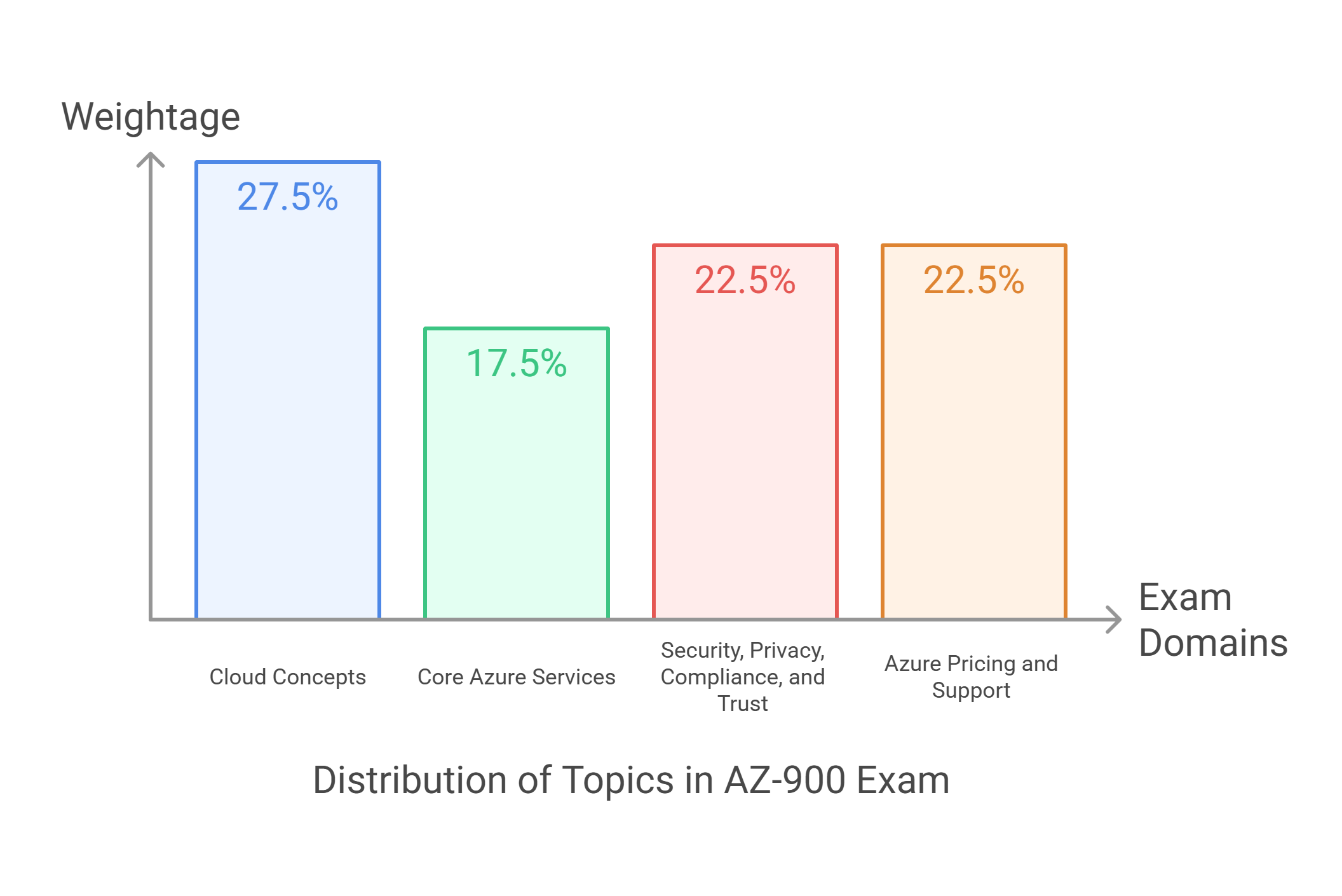
While all domains describe cloud concepts are important, cloud concepts and pricing/support often trip people up because they seem less practical but require detailed understanding. Focus more on these areas if you’re short on time.
How to Build a Strong Study Strategy for AZ-900 Success
Preparing for the AZ-900 exam doesn’t have to feel overwhelming. With the right approach, you can create a study plan that keeps you on track, uses effective resources, and sets you up for success. It’s all about working smarter, not harder, and focusing on understanding the study material, rather than cramming for quick recall.
Beyond foundational knowledge, the AZ-900 opens doors to exciting opportunities, and our analysis of job roles and salary trends for AZ-900 shows how this credential translates into real-world career growth.
Organizing Your Time for a Smooth Study Journey
One of the first things to figure out is how much time you can realistically dedicate to studying. While some people may pass the AZ-900 with just a weekend of prep, most find that spreading out their study sessions over a couple of weeks leads to better retention. Here’s a simple breakdown:
- Week 1: Focus on cloud concepts and basic Azure principles.
- Week 2: Dive into Azure services and security/compliance features.
- Week 3: Study Azure pricing models, support plans, and review weak areas.
- Final Days: Take practice tests, review incorrect answers, and polish your understanding of key concepts.
Set aside 1–2 hours a day, depending on your availability. Break it into smaller chunks if you find it hard to stay focused. For example, spend 30 minutes reading study guides, then switch to watching a video or doing a quiz.
Key Resources for AZ-900 Exam Prep: Study Guides, Videos, and Practice Tests
Finding the right resources is half the battle. Thankfully, Microsoft and the broader Azure community provide plenty of high-quality materials:
- Microsoft Learn
- Microsoft’s official learning platform is your best starting point. It’s free and offers bite-sized modules that are easy to digest. Plus, it includes hands-on exercises that help reinforce your understanding.
- Video Tutorials
- Platforms like YouTube and Udemy offer video courses specifically for AZ-900. Look for instructors who break down complex topics in plain language.
- Popular YouTube channels, like those by John Savill or Adam Marczak, cover exam-specific content in a straightforward way.
- Study Guides
- Many free and paid study guides are available online. Focus on guides that outline the exam domains clearly and provide examples to explain concepts.
- Practice Tests
- Taking practice tests is one of the most effective ways to prepare. They help you get used to the format, identify weak areas, and build confidence.
- Websites like MeasureUp or Whizlabs provide reliable, exam-like practice questions.
- Flashcards and Notes
- If you’re a visual learner, create flashcards for terms like IaaS, SaaS, PaaS, or Azure regions. Apps like Quizlet can help.
Having a mix of resources ensures you’re not stuck in one learning style. Switch things up to keep your study sessions engaging and effective.
Core Concepts of Azure for the Exam
The AZ-900 exam is your gateway to understanding Azure, and mastering its core concepts is key to passing. But don’t worry, it’s not about diving into technical rabbit holes. This section breaks down cloud services, Azure’s architecture, and the basics of pricing in simple, relatable terms so you can tackle the exam with confidence.
Simplifying Cloud Services and Models: IaaS, PaaS, SaaS
If cloud computing feels overwhelming, start by understanding the three primary service models describe cloud over:
- IaaS (Infrastructure as a Service)
Think of this as the cloud equivalent of renting an apartment. You get the essentials like servers, storage, and networking, but you’re in charge of maintaining and managing everything else.- Use Case: Hosting websites, running virtual machines (VMs), or creating backup environments.
- Example in Azure: Azure Virtual Machines.
- PaaS (Platform as a Service)
PaaS is like moving into a furnished apartment. The basics are set up, and you can focus on your specific needs without worrying about infrastructure. Developers love PaaS because it simplifies deploying apps.- Use Case: Developing apps without worrying about server configurations.
- Example in Azure: Azure App Service.
- SaaS (Software as a Service)
SaaS is fully managed. It’s like renting a hotel room, everything is ready for you, and all you need to do is use it. Most people already interact with SaaS daily through tools like email and streaming services.- Use Case: Using fully functional applications without managing backend systems.
- Example in Azure: Microsoft 365, which runs on Azure.
By breaking these down into everyday analogies, you’ll find it easier to relate to the questions on the exam.
Core Azure Architectural Components Explained
Azure’s architecture might sound complex, but it boils down to a few fundamental building blocks:
- Regions and Availability Zones
- Azure operates in regions, which are geographic areas (like East US, West Europe) where its data centers are located. Each region may have availability zones, which are isolated data centers designed to keep your data safe and services running even during hardware failures.
- Resource Groups
- Resource groups are like folders where you organize Azure resources (e.g., virtual machines, storage accounts). They make it easier to manage and monitor your cloud assets.
- Azure Resource Manager (ARM)
- ARM is the control center. It’s how Azure organizes and deploys resources. You interact with ARM whether you’re using the Azure portal, CLI, or APIs.
- Azure Virtual Network (VNet)
- This is Azure’s networking backbone, allowing resources to communicate securely within your cloud environment.
- Compute, Storage, and Networking
- These three form the core of any cloud system:
- Compute: Running applications and services (e.g., VMs, containers).
- Storage: Storing data (e.g., Azure Blob Storage for unstructured data).
- Networking: Connecting resources securely (e.g., VPNs).
- These three form the core of any cloud system:
Understanding how these components work together will help you tackle architecture-related questions with ease.
Decoding Azure Pricing and Lifecycle Management Basics
Azure’s pricing might feel like a headache, but Microsoft makes it transparent if you know where to look. The exam expects you to grasp how costs work and how to manage them effectively.
- Pay-as-You-Go Model
- Azure uses a consumption-based pricing model. You only pay for what you use, making it scalable and cost-effective for businesses of all sizes.
- Azure Free Tier
- Azure offers free services for 12 months, including popular ones like Virtual Machines and Blob Storage. Understanding what’s free can help businesses minimize costs.
- Azure Pricing Calculator
- This tool allows users to estimate costs based on the services they plan to use. It’s a must-know resource for the exam.
- Cost Management and Billing Tools
- Azure has built-in tools to monitor and optimize expenses. Familiarize yourself with features like budgeting, cost alerts, and usage insights.
- Lifecycle Management
- Azure automates resource management to save costs. For example, Azure Storage Lifecycle Policies move data to cheaper storage tiers as it ages, making it cost-efficient.
Pricing and lifecycle management questions often test your ability to apply these concepts. For cloud service types for instance, you might need to recommend how a business can cut costs using the pay-as-you-go model or storage tiers.
Essential Study Tips for AZ-900 Mastery
The AZ-900 exam is beginner-friendly, but going in unprepared can still catch you off guard. A solid approach to studying ensures you not only pass but truly understand the foundational Azure concepts. Here are the strategies to help you nail this certification on your first try.
Tackling Azure Concepts for Beginners: A Step-by-Step Approach
Azure may sound overwhelming when you’re just starting, but breaking it into manageable chunks makes all the difference. Follow this step-by-step approach:
- Understand Cloud Computing Basics First
- Before diving into Azure specifics, grasp the fundamentals of cloud computing. Learn what terms like scalability, elasticity, and fault tolerance mean in simple terms.
- Get Comfortable with Core Azure Services
- Focus on high-level services like Azure Virtual Machines (compute), Azure Blob Storage (storage), and Azure App Service (PaaS). Don’t aim for in-depth technical knowledge, just enough to recognize what each service does.
- Learn Azure Security and Compliance Features
- Azure prioritizes security, and the exam will test your understanding of tools like Azure Security Center, Network Security Groups (NSGs), and Azure’s compliance certifications.
- Understand Pricing and Support Plans
- Familiarize yourself with the pricing calculator and Azure cost management tools. Practice identifying the best support plans for different scenarios.
- Use Visual Aids and Analogies
- Create diagrams or find visuals online to understand concepts like Azure regions, availability zones, and service models. Analogies (like renting a hotel room for SaaS) help make these ideas stick.
This method ensures you’re not overwhelmed and helps build a steady understanding of Azure basics.
Using Official Microsoft Learn Materials Effectively
Microsoft Learn is a goldmine of free resources, and it’s perfectly tailored for AZ-900 candidates. Here’s how to make the most of it:
- Follow the AZ-900 Learning Path
- Start with the dedicated Microsoft Learn AZ-900 Learning Path, which is broken into modules aligned with the exam domains. It’s easy to follow and includes quizzes to test your knowledge.
- Take Advantage of Interactive Labs
- Many modules include hands-on exercises where you can experiment with Azure tools in a free sandbox environment. These labs reinforce your learning and provide real-world context.
- Don’t Skip the End-of-Module Quizzes
- These quizzes aren’t just checkpoints, they mimic the exam’s question style. Review your incorrect answers to identify gaps.
- Supplement with Azure Docs When Needed
- If you’re stuck on a concept, refer to Azure’s official documentation for detailed explanations. It’s a bit more technical, but it can fill in the blanks.
Microsoft Learn’s interactive format makes studying engaging and helps retain information better than static study guides.
Role of Practice Exams: How to Leverage Them for Guaranteed Success
Practice exams are your best friend when preparing for AZ-900. They don’t just test your knowledge—they train you to think like the exam.
- Start with Baseline Tests
- Begin with a practice exam to assess your current understanding. This helps you identify your strengths and areas where you need more focus.
- Simulate Real Exam Conditions
- Treat practice exams like the real deal: stick to the time limit, minimize distractions, and avoid pausing. This builds your stamina and reduces anxiety on test day.
- Analyze Your Mistakes
- Review every question you get wrong. Understand why your answer was incorrect and what the correct answer is. This process helps you master the material.
- Repeat Until You Score Consistently
- Keep taking practice exams until you consistently score above 85%. This ensures you’re not just passing but are well-prepared for any tricky questions.
If you’re still weighing your options, our AZ-900 vs CLF-C02 comparison highlights how Microsoft’s entry-level exam stacks up against AWS’s beginner-friendly alternative.
Exam Dumps by Cert Empire
When you’re short on time or need an extra confidence boost, exam dumps from Cert Empire can be a game-changer. These dumps provide a collection of real or closely simulated exam questions that help you:
- Familiarize Yourself with Question Types
- Exam dumps often include questions that mirror the actual AZ-900 exam, so you know what to expect.
- Understand Exam Scenarios
- They help you identify patterns in scenario-based questions, making it easier to apply your knowledge effectively.
- Reinforce Learning Quickly
- Going through dumps after studying lets you reinforce your understanding and focus on weak areas without wasting time.
While dumps are incredibly helpful, they work best when combined with genuine learning resources like Microsoft Learn and practice exams. Use them as a supplement, not your sole preparation method.
Cracking the AZ-900 Exam on Your First Try
Passing the AZ-900 on your first attempt is entirely possible with the right mindset, approach, and strategies for exam day. It’s not just about what you know, it’s about how you manage your time, stay calm, and approach each question logically. Here’s how to give yourself the best chance for success. If you’re new to cloud computing, check out our AZ-900 Certification: What You Need to Know to Get Started in Cloud Computing to build a strong foundation before diving into exam prep.
Exam Day Strategies for Staying Calm and Focused
The day of the exam can feel nerve-wracking, but staying composed is key. Here’s how to keep your cool:
- Arrive Early and Ready
- If you’re taking the test in person, get to the testing center early to avoid last-minute stress. For online exams, set up your workspace well in advance. Ensure your equipment meets technical requirements and is glitch-free.
- Practice Mindfulness
- Before starting the exam, take a moment to breathe deeply. This helps calm nerves and sharpens focus. Even during the exam, short deep breaths can reset your concentration.
- Have a Clear Plan
- Use the first few minutes to skim through the exam structure. Many platforms show you how many questions there are, allowing you to pace yourself.
- Stay Positive
- Remind yourself that you’re well-prepared. A positive mindset can make a big difference in how you tackle questions.
- Keep Hydrated and Comfortable
- Stay hydrated before the exam (but not so much that you’ll need constant breaks). Wear comfortable clothes and ensure your environment is distraction-free.
Answering Questions Strategically: Breaking Down Tricky Scenarios
Scenario-based questions are common in the AZ-900 exam, requiring you to apply your knowledge of exam topics to real-world situations. These questions can feel tricky, but a strategic approach makes them manageable:
- Read the Entire Question Carefully
- Don’t rush. Tricky scenarios often include unnecessary details to throw you off. Focus on identifying the core problem being asked.
- Highlight Keywords
- Look for critical terms like “best,” “most cost-effective,” or “secure.” These keywords guide you toward the right solution.
- Eliminate Obvious Wrong Answers
- Narrow your options by immediately discarding answers that don’t fit. This increases your odds of guessing correctly if needed.
- Think Like a Business User
- The AZ-900 isn’t deeply technical. Many questions focus on how Azure services solve business problems. Put yourself in the shoes of a business professional when analyzing the scenario.
- Use Context Clues
- Questions often include hints. For example, if a scenario mentions scalability, the correct answer likely involves services like Azure App Services or Virtual Machines.
- Prioritize Simplicity
- If two answers seem correct, choose the simpler one. Azure’s design philosophy often favors straightforward solutions.
What to Do if You’re Unsure of an Answer
It’s normal to encounter questions that stump you. When this happens, stay calm and try the following:
- Use the Process of Elimination
- Even if you’re unsure of the correct answer, eliminating one or two wrong options boosts your chances of guessing right.
- Look for Familiar Terms
- Match terms in the question to concepts you’ve studied. Familiarity can guide you to the right answer.
- Flag and Return Later
- If you’re truly stuck, mark the question for review and move on. Returning with a fresh perspective later can often help you see the answer more clearly.
- Don’t Leave Anything Blank
- There’s no penalty for guessing, so always make an educated guess if you’re unsure.
- Trust Your Preparation
- Remember the concepts you’ve studied. Avoid second-guessing yourself too much—it’s easy to overthink.
Putting It All Together!
Passing the AZ-900 on your first try is about more than just knowledge; it’s about strategy and confidence. By staying calm, breaking down questions methodically, and trusting your preparation, you’ll walk into the exam ready to succeed. Remember, it’s not just about passing, it’s about gaining valuable Azure knowledge that will serve you long after exam day.
FAQs About the AZ-900 Exam
How long should I prepare for the AZ-900?
Most candidates need 2–3 weeks of focused study, dedicating 1–2 hours per day, depending on prior familiarity with cloud concepts.
Can non-technical professionals pass this exam?
Absolutely! The AZ-900 is designed for beginners and focuses on foundational knowledge, making it ideal for non-technical roles.
What happens if I fail? Can I retake it?
Yes, you can retake the exam after 24 hours on your first attempt. Subsequent retakes require a 14-day waiting period.
Is the AZ-900 certification worth it without prior IT experience?
Definitely! It adds valuable cloud knowledge to your resume, boosts confidence, and opens doors to entry-level tech roles or advanced learning.
What resources are the most effective for AZ-900 preparation?
Microsoft Learn, practice exams, video tutorials (e.g., on YouTube or Udemy), and study guides are the top resources for thorough prep.





